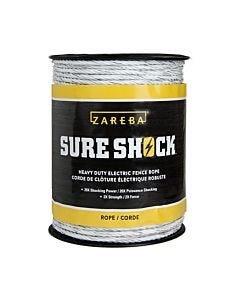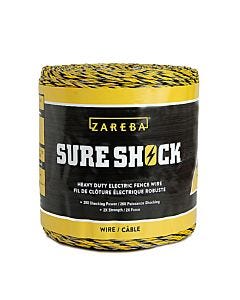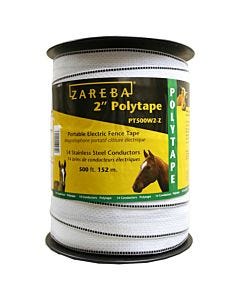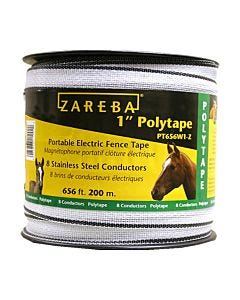Electric Fence For Cattle
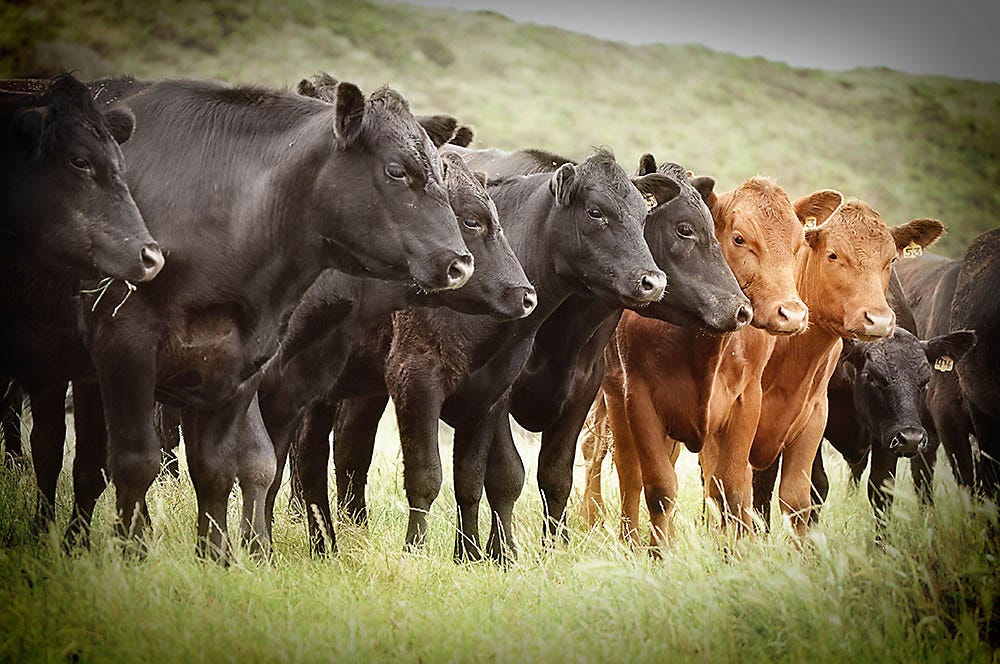
Beef Cattle
There are several fencing options for beef cattle. The type you chose will depend on factors such as expense, ease of construction, and expected life of the fence.
Traditionally barbed and woven wire materials have been used for beef cattle. However, barbed wire is not a recommended livestock fencing option because it is dangerous and likely to damage animals which come into contact with it. In addition, barbed wire fences require more maintenance and have a short lifespan.
While slightly more expensive than barbed wire, woven wire fences can be a good option for cattle in some situations. Modifying woven wire fencing with one or two strands of electric fencing above the fence will make this design an effective physical and psychological barrier. Fence height should be a minimum 39 inches.
Today, high-tensile electric fencing, like our Zareba® aluminized steel wire is proving to be the most popular choice for cattle. It can be used for both perimeter and interior fencing. Electric fencing for beef cattle centers around two main features – the fence wire and the charger. Certain factors must be considered when selecting the type of fence wire and the charger to be used. We recommend checking out our comparison guides on fencing solutions before you start.
Fence Wire
The number of fence wires used to contain beef cattle can vary from 1 to 6, depending on the following factors:
- Size of the cattle
- Life expectancy of the fence
- Whether you will work the cattle within the enclosure
- If you are concerned about keeping out predators
- Whether you use rotational grazing
Perimeter fencing
In general, at least 4 to 5 strands spaced approximately 10 inches apart are recommended for high-tensile fencing with a minimum fence height of 54 inches. Place the bottom wire at least 12 inches above the ground. At least 2 to 3 strands should be electrified. More wires will be necessary for bulls and aggressive breeds.
A standard electric fence alone should not be used as a perimeter fence. Zareba® aluminized steel wire is the best perimeter fencing option.
Tip: A fence enclosing both cows and calves requires an electrified wire at the nose-level height of each.
Feedlot
If containing cattle in a feedlot setting, at least 5 strands of high-tensile wire spaced 10 inches apart are recommended. The bottom wire should be placed approximately 12 inches above the ground. Minimum fence height should be at least 52 inches.
Rotational grazing
If rotationally grazing, T-posts and a 2 to 3-wire system can be used as cross-fencing to subdivide large pastures into smaller paddocks. Space wires 10 inches apart with the bottom wire approximately 20 inches from the ground. Fences should be at least 40 inches in height.
For a less permanent option, temporary electric fencing using step-in posts and 1 or 2 strands of Zareba® Polywire or Zareba® Polytape can also be used. Cross-fencing can then be electrified by tying into the "hot wires" of the main perimeter fencing.
Handling facilities
Wood or heavy wire panel fences are highly suggested for cattle handling facilities. In this case, electric fencing is not appropriate. Fencing heights for handling facilities should be at least 60 inches to prevent escape. Good visibility of fences is also important to reduce stress on animals and encourage livestock movement.
Note: If livestock get their heads between fence wires and receive a shock behind the eyes instead of in front of them, they tend to push into the fence rather than pull out. Proper wire spacing (a hot wire at the animal’s shoulder height) is important to safely contain your animals.
Fence Chargers
To safely contain most beef cattle, you need a fence charger that delivers a minimum of 2,000 – 3,000 volts on the fence line. Voltage levels are impacted by vegetation on the fence line, length of fence, and type of wire.
We recommend purchasing a Zareba® Fence Charger capable of maintaining these voltage levels:
- Use a low impedance fence charger for heavy weed conditions, long fences, and fences using poly wire or poly tape.
- A solid state fence charger is effective with light to moderate weed conditions, shorter fences, and fences using conventional metal wire.
- Battery and solar powered fence chargers are ideal for remote installations where AC power is not available.
If you are unsure what charger you need, check out our Fence Charger Guide for more information.
Note: A minimum of 5,000 volts on the fence line is required to deter predators.


